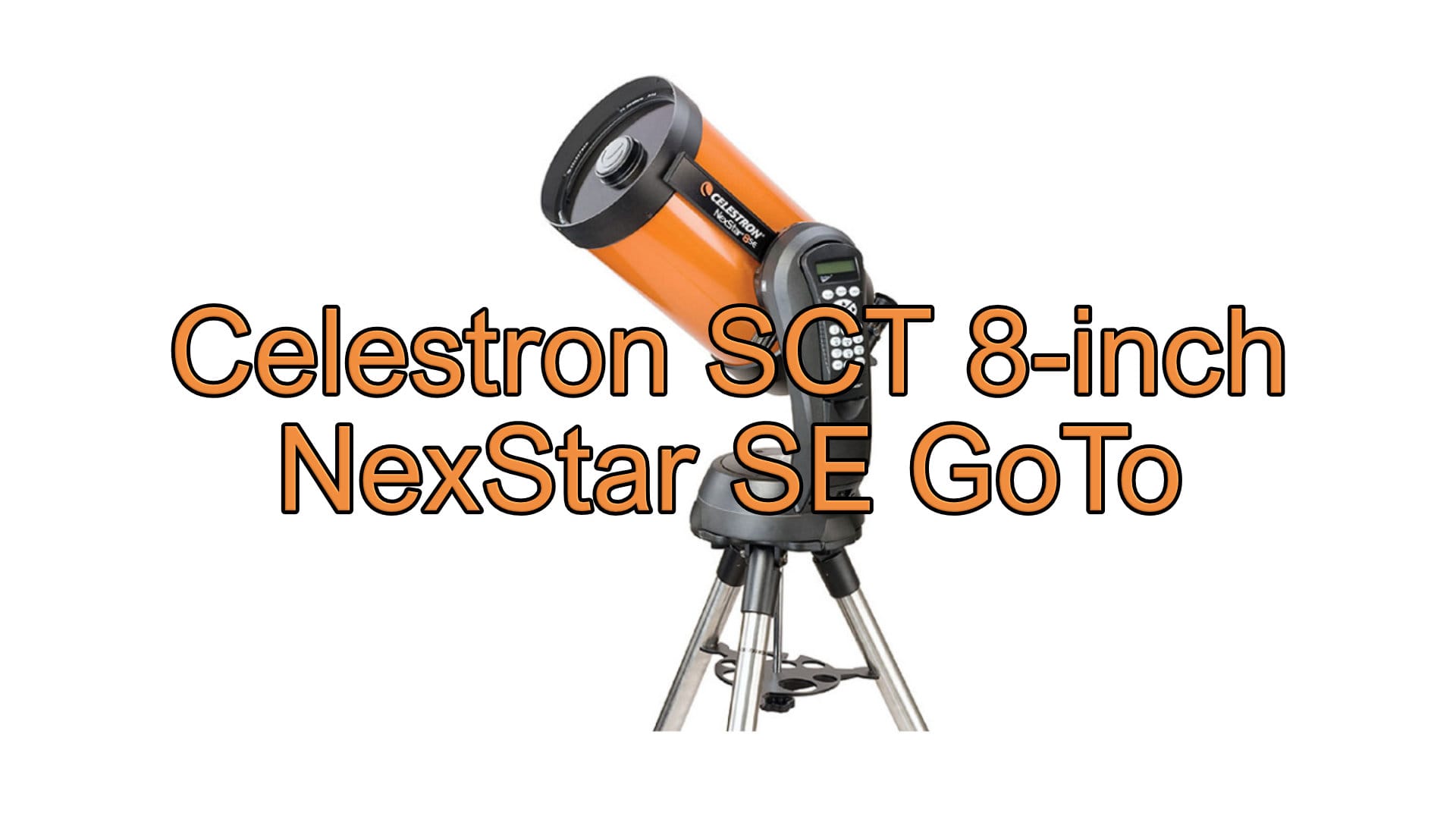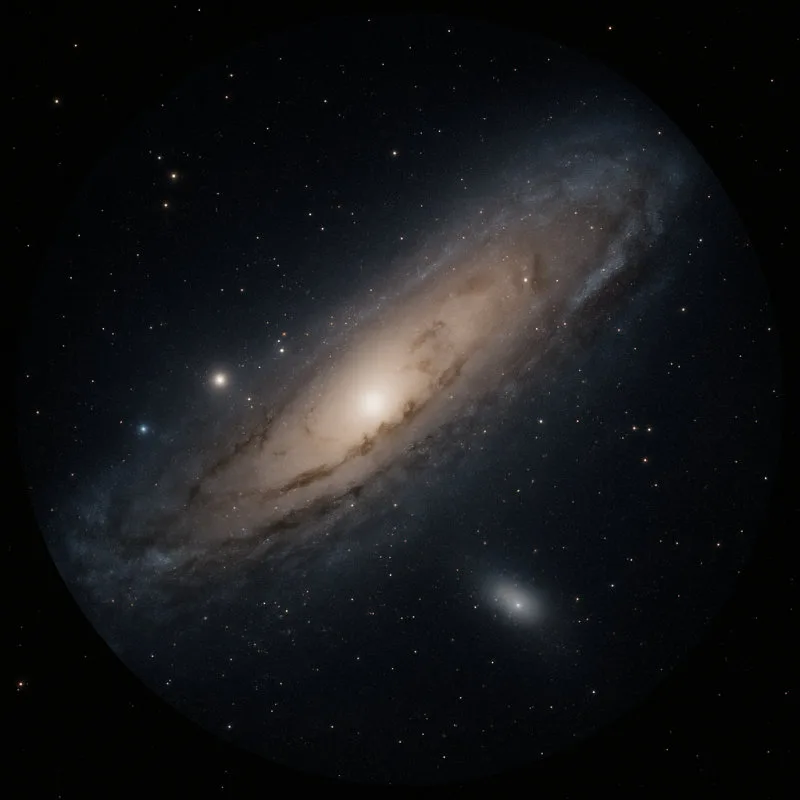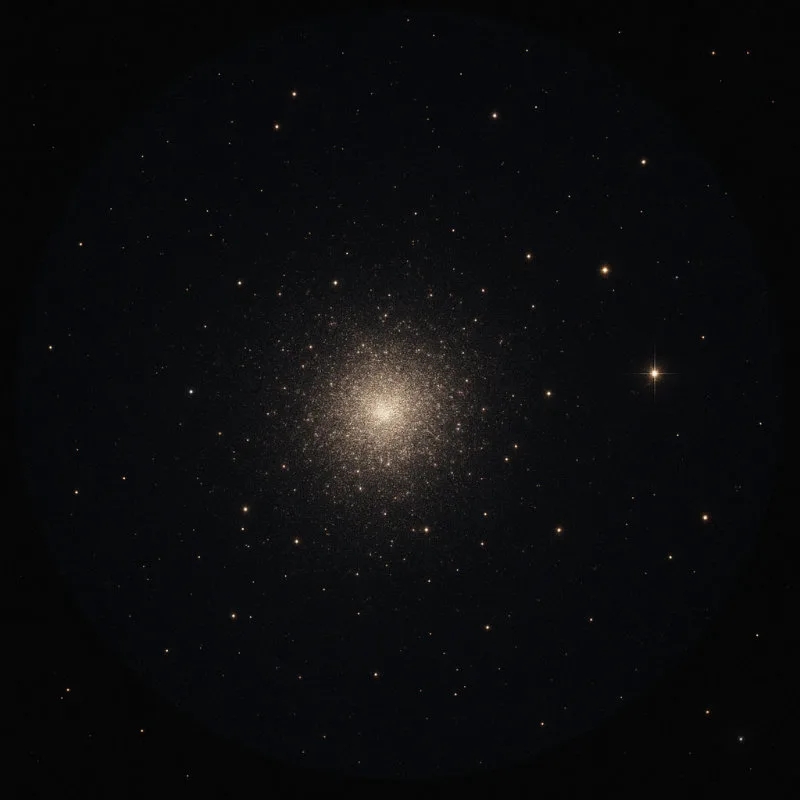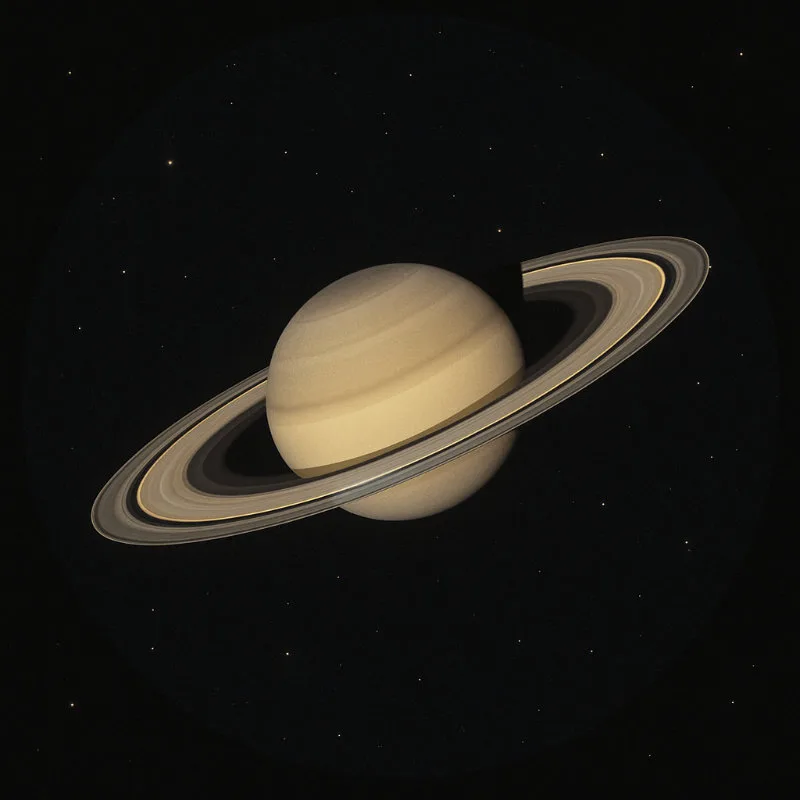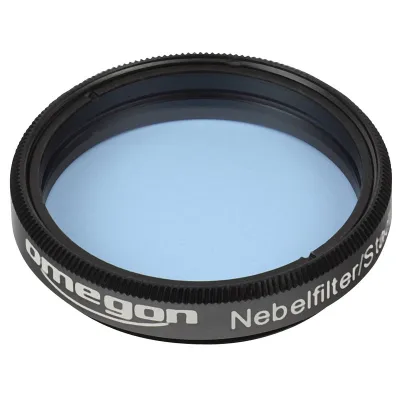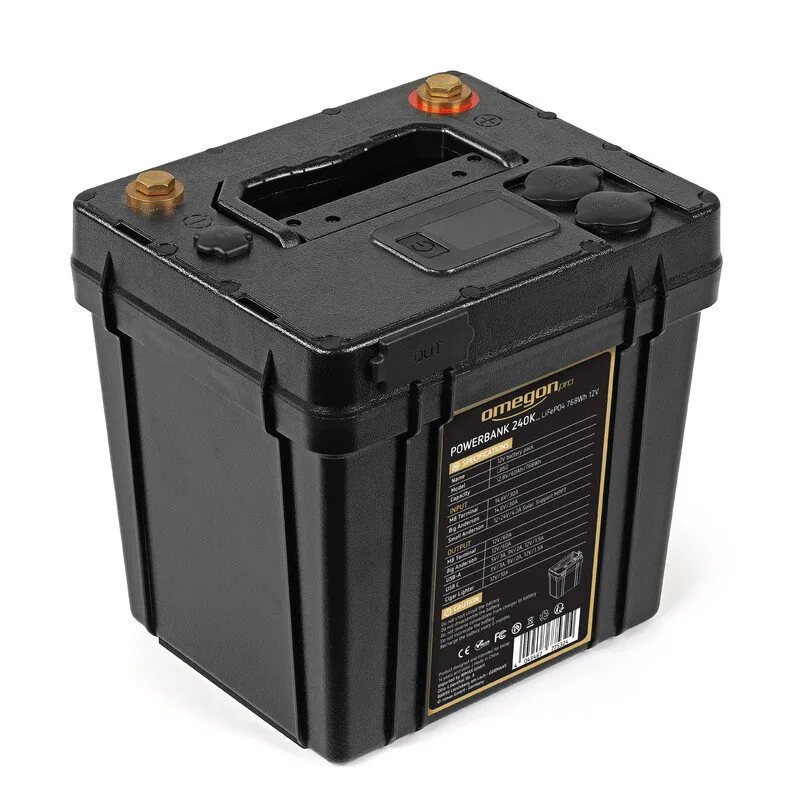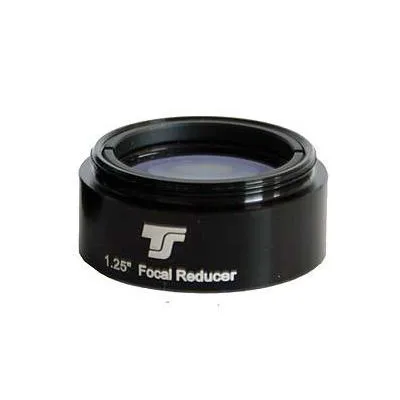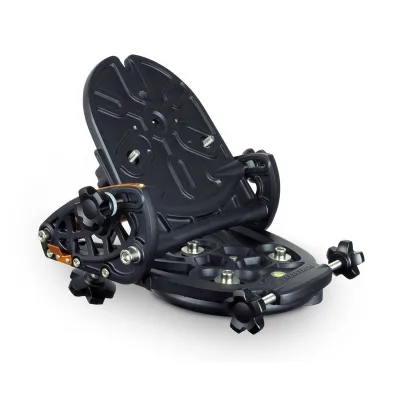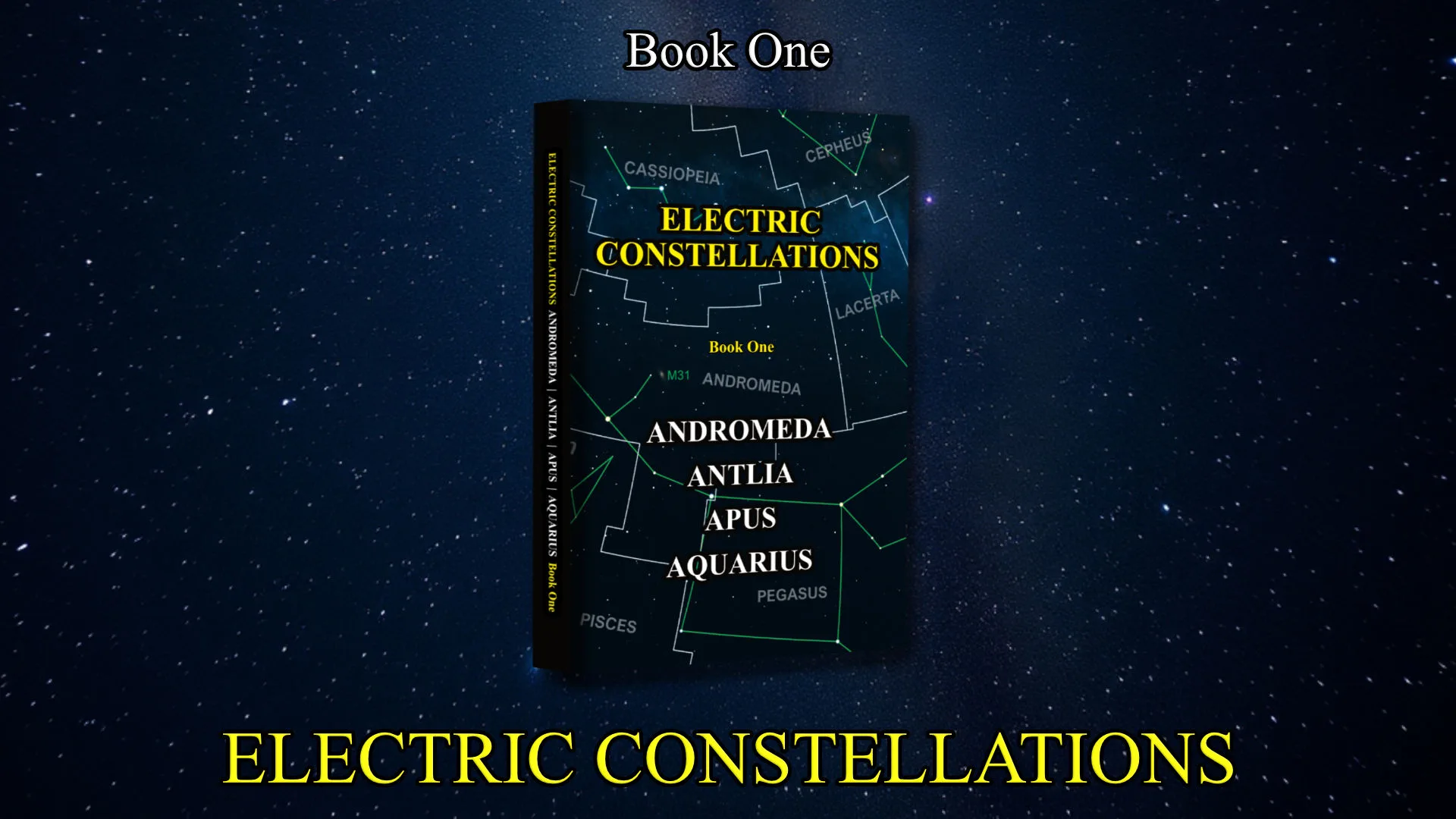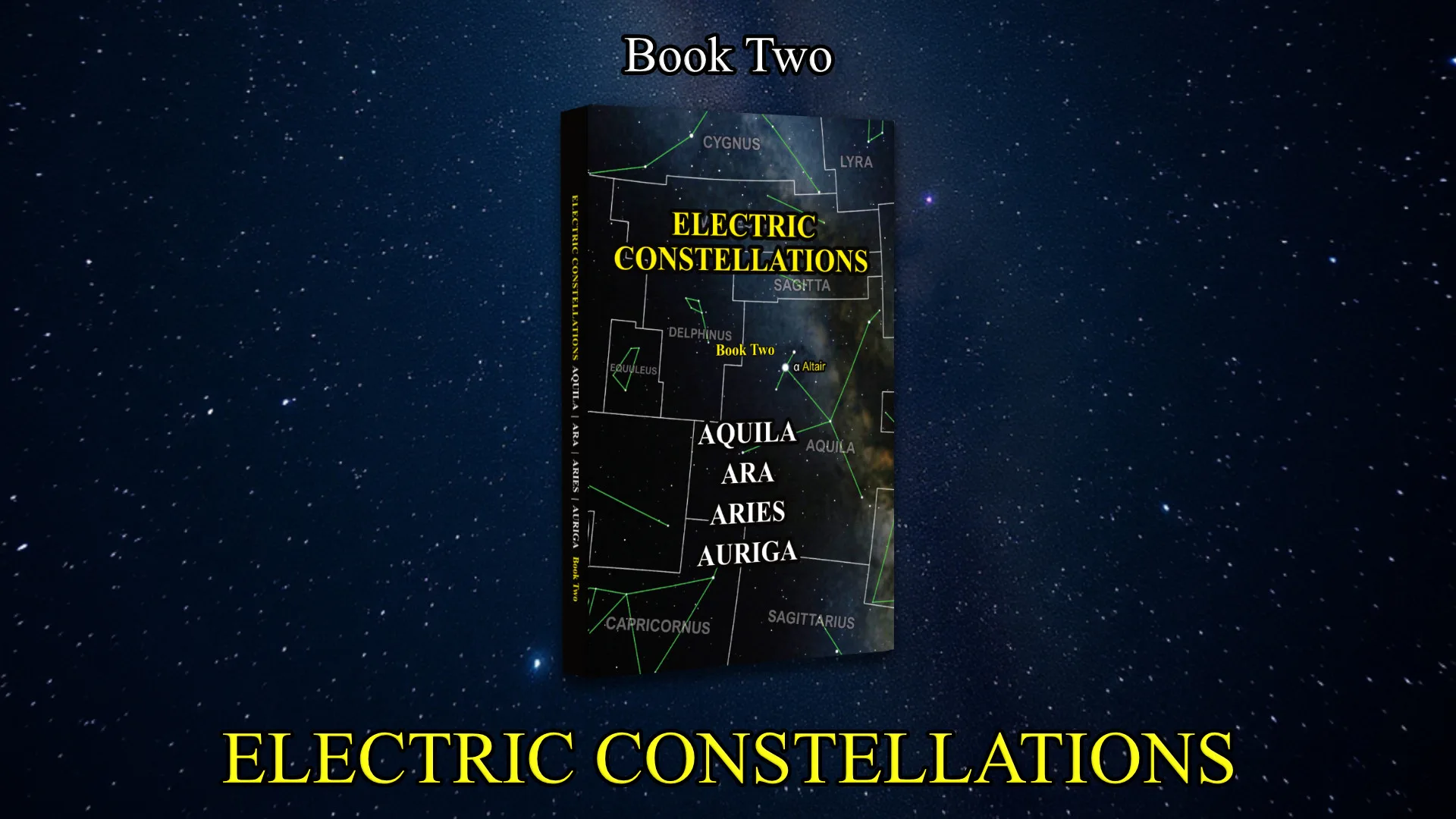Celestron NexStar 8SE
- The Celestron NexStar 8SE telescope offers impressive views of the Andromeda Galaxy with its 8-inch aperture and Schmidt-Cassegrain optics.
- GoTo mount technology and SkyAlign make finding and tracking the Andromeda Galaxy accessible even for beginners with minimal setup time.
- With proper conditions and eyepieces, you can observe Andromeda's core, dust lanes, and potentially its satellite galaxies M32 and M110.
- The NexStar 8SE balances portability with optical power, making it ideal for spontaneous galaxy viewing sessions.
- Best views of Andromeda come during fall and winter months when the galaxy is higher in the northern night sky.
Gazing at the Andromeda Galaxy through a telescope creates a profound moment of cosmic connection. This spiral galaxy, located 2.5 million light-years away, is the most distant object visible to the naked eye and appears even more spectacular through quality optics. The Celestron NexStar 8SE offers astronomy enthusiasts an exceptional portal to this neighboring galaxy, combining powerful optics with user-friendly technology.
Few astronomical targets inspire the same wonder as Andromeda. Seeing photons that left this galaxy when our earliest human ancestors were just beginning to walk upright creates a humbling perspective on our place in the universe. With the right equipment and techniques, observing Andromeda transforms from a challenging task into an accessible and rewarding experience that can be enjoyed from your backyard.
Seeing Andromeda Galaxy Up Close: Is It Really Possible?
Messier 31: Andromeda Galaxy
The question many astronomy beginners ask is whether consumer telescopes can truly deliver impressive views of galaxies. With the Celestron NexStar 8SE, the answer is a resounding yes. While you won't see the colorful, detailed images produced by the Hubble Space Telescope, the 8SE provides enough light-gathering capability to reveal Andromeda's bright core, subtle dust lanes, and even its overall structure. The telescope strikes an ideal balance between aperture, portability, and ease-of-use that makes deep-sky observation accessible to enthusiasts of all experience levels.
Why the Celestron NexStar 8SE Stands Out for Deep Sky Observation
The NexStar 8SE combines three crucial elements that make it exceptional for observing distant galaxies like Andromeda: substantial aperture, computerized tracking, and user-friendly design. These features work together to overcome the typical challenges of deep-sky observation – finding targets, keeping them in view, and gathering enough light to see detail. For many astronomers, the 8SE provided their first memorable view of Andromeda's distinctive structure, cementing their passion for cosmic exploration. Celestron's decades of experience designing quality optics ensure that each observation session delivers rewarding views worth sharing with friends and family.
8-Inch Schmidt-Cassegrain Optics: Perfect Aperture for Galaxy Viewing
The 8-inch aperture of the NexStar 8SE represents a sweet spot for galaxy observation. With 78% more light-gathering ability than a 6-inch telescope, it pulls in enough photons to reveal details in galaxies that smaller instruments miss. The Schmidt-Cassegrain optical design provides excellent contrast and resolution while maintaining a compact form factor. When pointed at Andromeda, this optical system delivers impressive views of the galaxy's core brightness, subtle structure variations, and, under dark skies, even hints of its spiral arms.
The premium StarBright XLT coatings further enhance the viewing experience by maximizing light transmission. These multi-layer coatings on all optical surfaces reduce light loss due to reflection, ensuring more photons from Andromeda reach your eye. At 2,032mm focal length and f/10 focal ratio, the optical system provides the perfect balance between field of view and magnification for observing large deep sky objects like the Andromeda Galaxy.
GoTo Mount Technology: Finding Andromeda Without Star Charts
Perhaps the most revolutionary aspect of the NexStar 8SE for deep sky observation is its computerized GoTo mount with SkyAlign technology. Traditional star-hopping to find Andromeda requires familiarity with the night sky and patience – skills that develop over time but can be discouraging for newcomers. The NexStar's database contains over 40,000 celestial objects, including Andromeda (M31), which can be located automatically after a simple alignment process.
SkyAlign technology requires just three bright celestial objects to orient the telescope to the night sky. Once aligned, finding Andromeda is as simple as selecting it from the hand controller menu. The mount then slews automatically to the galaxy and begins tracking it as Earth rotates. This tracking capability is crucial for extended observation sessions and sharing views with others, as the galaxy remains centered in the eyepiece without constant manual adjustments.
For beginners, this technology removes one of the most significant barriers to astronomy – the frustration of trying to locate objects. Many potential enthusiasts have abandoned the hobby after unsuccessful first nights, but the NexStar 8SE virtually guarantees satisfying views of Andromeda on your first attempt. The confidence this builds encourages further exploration of the night sky.
Celestron Schmidt-Cassegrain telescope SC 203/2032 NexStar 8 SE GoTo
Despite housing an 8-inch optical tube, the NexStar 8SE maintains remarkable portability. The entire setup weighs about 33 pounds when fully assembled, but breaks down into manageable components for transport. This portability factor shouldn't be underestimated when planning galaxy observations. Andromeda is best viewed from dark sky locations away from city lights, and having a telescope you can easily transport significantly increases your opportunities for optimal viewing conditions.
The distinctive orange tube and single-arm mount have become iconic in the astronomy community. This design isn't just about aesthetics—it represents a practical engineering solution that balances stability with weight considerations. Many observers appreciate the ability to set up the entire system in under 15 minutes, allowing more time for actual observation during limited viewing windows when Andromeda is positioned optimally in the night sky.
Successful observation of the Andromeda Galaxy begins with proper telescope setup. While the NexStar 8SE is designed for quick deployment, attention to a few key details will dramatically improve your viewing experience. Begin by finding a location with minimal light pollution and good visibility toward the northeastern sky (for Northern Hemisphere observers). Ensure your tripod is on stable ground and roughly leveled before mounting the optical tube assembly and powering on the system.
Allow your telescope to cool down to ambient temperature for at least 30 minutes before serious observation. Temperature differentials between the mirror and surrounding air can cause distortion that reduces image clarity—particularly important when observing faint details in galaxies. This cooling period is a perfect opportunity to familiarize yourself with the handset controls and plan your observing session.
Quick Alignment Using SkyAlign Technology
The SkyAlign system revolutionizes the alignment process, making it accessible even for complete beginners. After powering on, the hand controller will prompt you through the alignment procedure. Simply center any three bright celestial objects in your eyepiece when prompted. These can be bright stars, planets, or even the moon—the system will calculate its orientation based on these reference points. The entire process typically takes less than five minutes, after which you'll have access to the automated location of thousands of deep sky objects, including Andromeda.
For optimal tracking accuracy, choose alignment stars that are well-spaced across the sky rather than clustered in one area. Once alignment is complete, select "Messier Objects" from the database and navigate to M31 (Andromeda Galaxy). The telescope will automatically slew to the correct position, placing Andromeda in your field of view with remarkable precision. This technology eliminates the frustration many beginners experience when trying to locate faint objects manually.
Best Eyepieces for the Andromeda Galaxy Observation
The included 25mm Plössl eyepiece (81x magnification) provides a good starting point for observing Andromeda, offering a wide enough field of view to capture the galaxy's core and surrounding structure. However, experienced observers often recommend adding a 32mm eyepiece (approximately 63x magnification) to your collection specifically for galaxy observation. This lower magnification provides a wider field of view that better frames the Andromeda Galaxy's expansive structure, allowing you to see more of it at once.
For exploring specific details after locating the galaxy, a 15mm eyepiece (approximately 135x magnification) helps resolve finer structures without sacrificing too much brightness. Avoid very high magnification eyepieces when observing galaxies—they spread out the already faint light, making details harder to detect. The ideal approach involves starting with lower magnification to locate and appreciate Andromeda's overall structure, then potentially increasing magnification to study specific regions of interest.
Ideal Viewing Conditions and Timing
Timing plays a crucial role in the successful observation of the Andromeda Galaxy. In the Northern Hemisphere, Andromeda is best viewed during fall and winter months (September through February) when it rises high in the sky, reducing the amount of atmosphere you must look through. For optimal views, wait until the galaxy is at least 30 degrees above the horizon—atmospheric distortion significantly degrades views of objects lower in the sky.
Moon phases dramatically impact deep sky observation. Plan your Andromeda viewing sessions during the new moon or when the moon is below the horizon to maximize contrast and visibility of faint details. Dark adaptation is equally important—allow your eyes at least 20-30 minutes to adjust to darkness before attempting to observe fine details in the galaxy. Using a red flashlight preserves your night vision while still providing enough illumination to operate your equipment.
What to Expect: Realistic Views of Andromeda Through the 8SE
Managing expectations is important when observing galaxies visually. Through the NexStar 8SE under dark skies, Andromeda appears as an oval-shaped glow with a distinctly brighter center. The galaxy spans several times the apparent diameter of the full moon, though only the brighter central region is typically visible through telescopes. First-time observers are often surprised by the subtle, grayscale appearance compared to vibrant astrophotography images. This difference reflects the limitations of human night vision rather than telescope capability.
With practice and patience, additional details emerge. After extended observation, you may detect variations in brightness across the galaxy's structure, subtle dust lanes, and the overall elliptical shape extending outward from the bright core. These details become more apparent as your eyes adapt fully to darkness and you develop the observational skills to detect subtle contrasts. The experience of personally witnessing photons that have traveled 2.5 million years to reach your eye creates a profound connection to the cosmos that transcends the visual impression alone.
Core and Dust Lanes: What You'll Actually See
Through the NexStar 8SE under good conditions, Andromeda's core appears as a bright, concentrated oval of light that gradually fades toward its edges. With careful observation and fully dark-adapted eyes, subtle variations in brightness become apparent, revealing the galaxy's structure. The most striking feature is the concentrated central bulge, which contains billions of older stars packed into a relatively small space. Surrounding this core, patient observers can detect the fainter disk where spiral arms reside, though individual arms aren't typically distinguishable.
One of the most rewarding sights for experienced observers is glimpsing Andromeda's dark dust lanes. These appear as subtle, shadowy regions cutting across portions of the galaxy's brightness. The dust lanes represent vast clouds of interstellar material that block light from stars behind them. Seeing these features requires dark skies, excellent transparency, and developed observational skills—but the NexStar 8SE provides sufficient optical quality to reveal them under favorable conditions. Many observers report that the dust lanes become more apparent after spending 10-15 minutes studying the galaxy, as their eyes fully adapt to detect subtle contrasts.
Comparing Visual Observation vs. Photos
Visual observations of Andromeda through the NexStar 8SE differ significantly from the spectacular color photographs we've grown accustomed to seeing. While professional images show vibrant blues, pinks, and intricate spiral structure, your eye will perceive primarily grayscale tones and more subtle details. This discrepancy occurs because human eyes use rod cells for night vision, which don't perceive color in low-light conditions. Additionally, photographs can collect light over minutes or hours, revealing details too faint for real-time human vision.
Despite these differences, many observers find the visual experience more profound and meaningful. There's something uniquely moving about directly observing photons that have traveled 2.5 million light-years to reach your retina. The subtle beauty visible through the eyepiece represents your connection to this distant island universe, unmediated by processing or enhancement. Understanding this distinction helps set appropriate expectations and appreciate the unique value of both visual observation and astrophotography.
Can You See Andromeda's Satellite Galaxies M32 and M110?
One of the most exciting aspects of observing Andromeda through the NexStar 8SE is the opportunity to spot its companion galaxies. M32, a small elliptical galaxy, appears as a fuzzy star-like point near Andromeda's core. Under good conditions, it's relatively easy to spot with the 8SE, appearing as a small, concentrated glow in the same field of view as Andromeda's bright center. This companion galaxy is located approximately 2.5 million light-years away, the same distance as Andromeda itself.
M110, Andromeda's larger elliptical companion, presents more of a challenge. It appears as a faint, elongated smudge of light, typically requiring darker skies to detect. The 8SE's aperture provides sufficient light-gathering capability to reveal M110 under good conditions, though you may need to use averted vision (looking slightly to the side of your target) to detect it. Successfully observing both of these satellite galaxies along with Andromeda creates a powerful impression of seeing an entire galaxy system spanning millions of light years.
While Andromeda captivates with its grandeur, the NexStar 8SE opens a window to thousands of other deep sky treasures. After exploring our neighboring galaxy, you can use the same telescope to observe remarkable nebulae, star clusters, and other galaxies. The GoTo system makes locating these objects simple, while the 8-inch aperture provides sufficient light-gathering power to reveal meaningful detail in hundreds of celestial targets. Many observers find that mastering Andromeda observation serves as a gateway to exploring progressively more challenging deep sky objects.
Messier 42 – The Orion Nebula
The Orion Nebula (M42) offers a dramatic contrast to Andromeda, appearing as a swirling cloud of gas and dust where new stars are being born. Through the NexStar 8SE, this stellar nursery reveals intricate structural details and the trapezium cluster of young stars at its heart. Unlike galaxies, this nebula shows hints of color even visually—some observers detect subtle greenish hues in its brighter regions. The relatively proximity (about 1,350 light years) makes the Orion Nebula one of the brightest deep sky objects, perfect for nights when conditions aren't ideal for galaxy hunting.
Messier 13 – The Hercules Cluster
Globular clusters like M13 in Hercules showcase the NexStar 8SE's resolving power. Through the eyepiece, these ancient stellar cities transform from fuzzy patches into spectacular spherical collections of thousands of individual stars. The 8-inch aperture begins to resolve individual stars even in the dense cores of these clusters, creating a three-dimensional, granular appearance that many observers find mesmerizing. Comparing the different structures of globular clusters provides insights into the diverse evolution of these ancient stellar populations throughout our galaxy.
The Ringed Planet Saturn
When deep sky objects prove challenging due to conditions, the NexStar 8SE excels at planetary observation. Saturn's rings, Jupiter's cloud bands and moons, and Mars' polar caps appear with remarkable clarity. The Schmidt-Cassegrain optical design delivers excellent planetary images, with the 8-inch aperture providing enough resolution to spot details like Jupiter's Great Red Spot or Saturn's Cassini Division. These bright targets remain impressive even from light-polluted locations, making planetary observation perfect for urban astronomers between trips to darker sites for galaxy hunting.
While the NexStar 8SE simplifies many aspects of astronomy, observing faint objects like Andromeda still presents challenges. Understanding these potential hurdles—and their solutions—helps ensure rewarding observations. The most common issues involve light pollution, power management, and focusing techniques. With proper preparation and technique, these obstacles can be minimized or overcome entirely, leading to dramatically improved views of distant galaxies.
Dealing With Light Pollution
Light pollution presents the greatest challenge to observing faint objects like Andromeda. While the ideal solution is traveling to dark sky locations, this isn't always practical. For urban and suburban observers, light pollution filters can improve contrast by blocking wavelengths commonly emitted by streetlights while allowing the broad-spectrum light from celestial objects to pass through. A UHC (Ultra High Contrast) or broadband light pollution filter threads onto your eyepieces and can significantly improve views of Andromeda from moderately light-polluted locations.
Omegon 1.25-inch light pollution filter
Strategic timing and location selection also help mitigate light pollution. Look for the darkest direction from your observing location and schedule sessions when that area of sky contains your target. Even in suburban areas, finding a spot shielded from direct light sources by buildings or trees can dramatically improve contrast. Remember that Andromeda appears most distinct on moonless nights, so consulting a lunar calendar helps identify optimal viewing windows.
Battery Life Solutions for All-Night Sessions
The NexStar 8SE's motorized mount requires consistent power for tracking objects like Andromeda throughout an observing session. The standard battery pack drains quickly, especially in cold weather, potentially cutting observations short. Investing in a high-capacity external power supply, such as a portable power station with 12V output, provides hours of uninterrupted operation. These power stations often include USB ports for charging other devices like phones or cameras, making them versatile additions to your astronomy kit.
For extended field sessions away from power sources, consider a dedicated astronomy power tank with 12V DC output.
12V Power Pack To Keep You Powered All Night!
These specialized batteries are designed for telescope operation, with sufficient capacity for all-night sessions. Always keep your batteries warm in cold weather—storing them in an insulated container until needed helps maintain capacity. Having backup power options ensures you won't miss those perfect moments when Andromeda is positioned ideally in dark, clear skies.
For remote observing locations, portable power stations with 100Wh or greater capacity offer the best combination of run time and convenience. These can be recharged from your vehicle or solar panels for multi-night star parties. Consider this investment essential if you regularly observe from locations without access to AC power—the last thing you want is a battery failure just as Andromeda reaches its optimal position in the night sky.
Achieving precise focus dramatically improves views of faint objects like Andromeda. The NexStar 8SE's focus mechanism is sensitive, requiring subtle adjustments for optimal sharpness. Begin focusing on a bright star near Andromeda, making tiny adjustments until the star appears as a pinpoint rather than a diffuse disk. A Bahtinov mask for Celestron 8-inch SCTs—an inexpensive focusing aid that creates a specific diffraction pattern—can help achieve perfect focus before moving to fainter targets.
Bahtinov Mask for the Celestron NexStar 8SE
Temperature changes throughout an observing session can affect focus as the telescope's optical tube contracts or expands slightly. Periodically check and refine focus, especially if you notice deterioration in image quality. For users interested in astrophotography, a motorized focuser accessory allows precise focus adjustment without introducing vibrations that degrade image quality. These focusing techniques become second nature with practice, significantly enhancing the detail visible in Andromeda and other deep sky objects.
While the NexStar 8SE comes ready for basic observation out of the box, strategic accessories significantly enhance Andromeda viewing. Investing in quality eyepieces, filters, and power solutions transforms good views into exceptional ones. These add-ons need not be purchased all at once—building your accessory collection gradually allows you to address specific challenges as you encounter them and progressively improve your deep sky observing capabilities.
For observers in light-polluted areas, specialized filters make the difference between barely detecting Andromeda and appreciating its structure. A 1.25-inch broadband light pollution filter improves contrast by blocking wavelengths emitted by common artificial lighting while allowing the galaxy's full spectrum to pass through. 2-inch filters are also available for big eyepieces. Unlike narrowband filters used for nebulae, these broadband filters preserve galaxy details while darkening the background sky. Advanced observers might also consider a neutral density moon filter, which reduces overall brightness and can be helpful when observing Andromeda with fully dark-adapted eyes.
Camera Adapters for Basic Celestron NexStar 8SE Astrophotography
Focal reducers provide wider views
While primarily designed for visual observation, the NexStar 8SE can capture impressive images of Andromeda with the right accessories. The simplest approach utilizes a smartphone adapter, such as the NexYZ, which precisely aligns your phone's camera with the eyepiece. This technique, called afocal photography, can capture Andromeda's bright core and basic structure—perfect for sharing your observations on social media or with friends.
More advanced astrophotographers might add a T-adapter and a matching T-ring to their DSLR camera, allowing for a direct connection to the telescope without the need for an eyepiece. This prime focus configuration captures more light and provides better image quality. While the alt-azimuth mount limits exposure length, techniques like image stacking can produce surprisingly detailed photos of Andromeda, preserving your observations and allowing you to share the galaxy's beauty with others.
For serious astrophotography of Andromeda, consider a dedicated astronomy camera with cooling technology to reduce noise in long exposures.
Cooled QHYCCD 600PH-C Color Astro Camera
These specialized cameras connect to laptops for real-time image preview and capture. While representing a significant investment, they unlock the full potential of the NexStar 8SE's optical quality for imaging purposes. Many observers start with simple smartphone adapters and progressively build their imaging capabilities as their interest in astrophotography grows.
Take Your Cosmic Journey Further
The journey that begins with observing Andromeda through your NexStar 8SE can evolve into a lifelong passion for exploring the cosmos. Consider joining local astronomy clubs where you can connect with experienced observers who share knowledge, observing techniques, and access to dark sky locations. Online communities dedicated to Celestron telescopes offer valuable tips specific to your equipment. Each observing session builds skills that enhance future explorations, allowing you to detect increasingly subtle details in Andromeda and thousands of other celestial wonders waiting within reach of your telescope. Celestron's ongoing support and extensive user community ensure you'll have resources available as your astronomical journey continues.
New astronomers often have questions about the practical aspects of observing Andromeda with the NexStar 8SE. The following answers address common concerns and help set realistic expectations for your observing sessions. Remember that astronomy is a journey—each observation builds skills that enhance future experiences, allowing you to see more detail and appreciate the subtle beauty of objects like the Andromeda Galaxy.
How long does it take to set up the Celestron NexStar 8SE for first-time users?
First-time users typically complete the entire setup process in 15-20 minutes. This includes tripod deployment, mounting the optical tube, powering on the system, and completing the SkyAlign procedure. After several sessions, many users can reduce this time to under 10 minutes. The quick setup is one of the NexStar 8SE's greatest advantages, allowing for spontaneous observing sessions when conditions are ideal for viewing Andromeda.
Can I see the Andromeda Galaxy from light-polluted areas with this telescope?
Yes, the Andromeda Galaxy remains visible through the NexStar 8SE even from suburban areas with moderate light pollution. From these locations, you'll see the galaxy's bright core, though outer regions and subtle details may be less apparent than from truly dark sites. The telescope's 8-inch aperture gathers sufficient light to overcome moderate light pollution.
For best results in light-polluted areas, use a quality light pollution filter, observe during moonless nights, and allow extra time for dark adaptation. Urban observers in severely light-polluted city centers may see only the galaxy's brightest central region, but the experience remains rewarding and builds skills for future observations from darker locations.
Is the NexStar 8SE suitable for astrophotography of deep sky objects?
The NexStar 8SE can capture basic astrophotography of Andromeda and similar bright deep sky objects with some limitations. The alt-azimuth mount introduces field rotation during longer exposures, generally limiting exposure times to under 30 seconds. This is sufficient for capturing Andromeda's core and basic structure, especially when using image stacking techniques to combine multiple short exposures. For more detailed insights, check out this Guide on the NexStar 8SE.
For more advanced deep sky photography, some users add a wedge accessory to convert the mount to equatorial tracking, which eliminates field rotation.
Celestron NexStar 8SE Wedge Accessory
Others use the NexStar 8SE primarily as an excellent visual observation platform while investing in a separate tracking mount dedicated to astrophotography. Beginning with smartphone adapter photography provides an excellent introduction to imaging techniques while maintaining the telescope's primary strength as a visual instrument.
How does the 8SE compare to the smaller models in the NexStar series for galaxy viewing?
The 8SE significantly outperforms smaller models in the NexStar series for galaxy observation due to its larger aperture. Compared to the 6SE, the 8-inch model gathers 78% more light, resulting in brighter, more detailed views of Andromeda's structure. This difference becomes especially apparent when attempting to observe the galaxy's outer regions and companion galaxies M32 and M110, which appear noticeably dimmer in smaller aperture instruments. For more details, check out this Celestron NexStar 8SE review.
While the smaller models share the same excellent GoTo system and ease of use, the additional light-gathering capability of the 8SE makes it the preferred choice for serious deep sky observation. The visual difference follows the inverse square law—seemingly small increases in aperture produce substantial improvements in image brightness and detail. For observers primarily interested in galaxies and other faint deep sky objects, the 8SE represents the optimal balance of aperture, portability, and value within the NexStar line.
What is the best time of year to observe the Andromeda Galaxy?
In the Northern Hemisphere, Andromeda is best observed from late summer through winter, with optimal viewing from September through January. During these months, the galaxy rises high above the horizon during convenient evening hours, reducing atmospheric interference and providing longer observing windows. By October and November, Andromeda reaches its highest point in the sky around midnight, creating ideal observing conditions.
While Andromeda is technically visible year-round from most northern latitudes, summer observations are complicated by shorter nights and the galaxy's lower position in the sky. Southern Hemisphere observers have more limited viewing opportunities, with the galaxy appearing lower in the northern sky for shorter periods. Regardless of your location, consulting astronomy apps or planetarium software helps identify the optimal nights and times when Andromeda will be highest in your local sky.
The seasonal timing should be combined with moon phase considerations—plan your observations during the new moon period when the sky is darkest. The combination of optimal seasonal positioning and moonless nights provides the best possible views of Andromeda's structure, maximizing the capabilities of your NexStar 8SE telescope.
Challenge the standard model—explore the cosmos through the Electric Universe Theory. These Electric Constellations books contain full-color, data-rich investigations of four constellations each. They're not a beginner's star guide—they're a serious work for independent thinkers, astronomers, and scientifically literate readers seeking to understand the Universe beyond conventional gravity-based interpretations.
Each constellation is examined in detail, with attention to its Bayer-designated stars, mythological origins, meteor showers, and bordering constellations. In-depth profiles of deep-sky objects—including galaxies, planetary nebulae, and star clusters—are paired with high-resolution imagery from the Webb and Hubble space telescopes, delivering both scientific clarity and visual impact.
Central to this series is the Electric Universe (EU) model, which proposes that electromagnetic forces—not gravity alone—govern much of the structure and behavior of the cosmos. Rather than treating this as speculative fringe, the book frames the EU model as an evidence-based, plasma-physics-informed alternative to the standard cosmological narrative.
Inside each volume:
- Comprehensive coverage of four distinct constellations
- Analyses of deep-sky objects in the EU context
- Original commentary on plasma discharge features and Z-pinch configurations
- Mythological and historical context without romantic embellishment
Written for readers who demand more than rote repetition of gravitational dogma, Electric Constellations opens a new observational and theoretical frontier—where stars light by electrical currents, not fusion, and where structure emerges from plasma dynamics, not dark matter.
Whether you are an amateur astronomer, electrical engineer, or astrophysicist curious about alternative models, these books deliver a rigorous and visually stunning exploration of the night sky—illuminated by a very different current.
